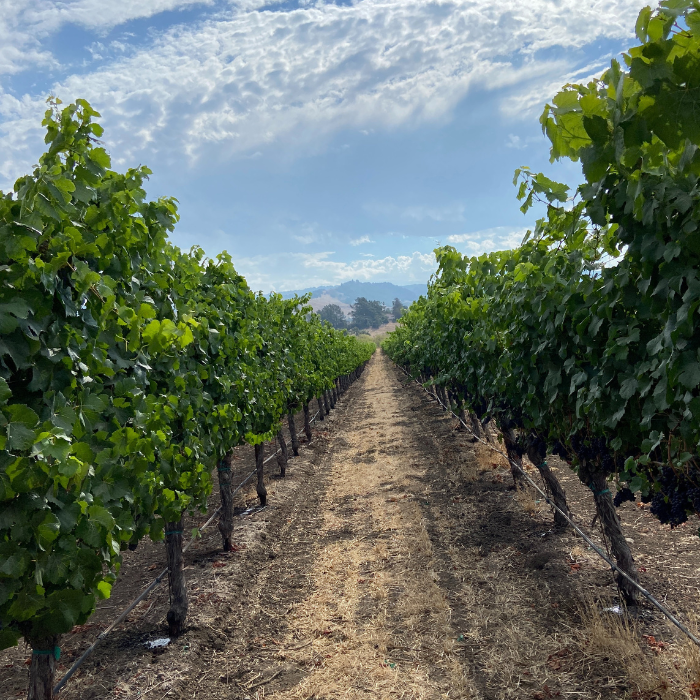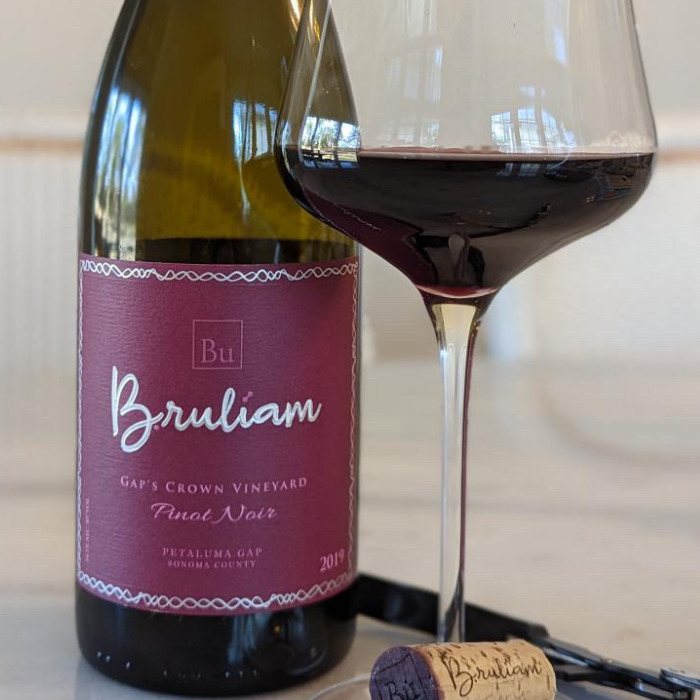Going Gaga for the Gap
Wine lovers in the know are crazy about the Gap. Nope, I don’t mean either the clothing store or the catchphrase of the British Underground, but the Petaluma Gap, home to many of Sonoma County’s most renowned wine grapes. Even if you’ve never heard of the Petaluma Gap AVA, chances are you’ve already tasted wine from this emerging and critically acclaimed region. Before landing its own name, the Petaluma Gap territory was considered Sonoma Coast. And that fact remains true today, as wineries are allowed to bottle their Gap wines as either Petaluma Gap or Sonoma Coast. But I believe that the Petaluma Gap designation is even more empowering for Sonoma wineries and Sonoma wine lovers than a Sonoma Coast appellation. Here’s why.
The Petaluma Gap is a cool climate ava
All the Sonoma Coast is cool. All of Sonoma’s coastline benefits from cool morning fog wafting off the Pacific, blanketing the vines in romantic mist. Likewise, all of Sonoma’s coastline is cooler than our county’s interior, accounting for degree days and daytime highs. But only the Gap is defined by its distinctive wind pattern. Consider a typical day in the Petaluma Gap. Morning fog gives way to afternoon sunshine, with daytime highs peaking in the late afternoon, just around the time the wind picks up off the Pacific. Coincidence? Never! That wind drives the terroir of Sonoma’s best kept secret, the Petaluma Gap, home to elegant wines brimming with character and complexity. And it’s all because of that wind!
the gap is beloved by wine growers & winemakers alike
Esteemed and venerated third-generation wine grower Steve Sangiacomo describes the Petaluma Gap perfectly: “Petaluma Gap allows for wines with amazing texture and complexity due to the persistent winds and moderate temperatures throughout the growing season. An appellation that stands on its own for its consistency and it is great to see its stature among wine consumers continue to rise.”
every DISTINCTION is defined by the wind
A typical afternoon in the Petaluma Gap - windy with a chance of wind
wind rustling through the vines occurs daily
Let’s talk about breaking wind. (Sorry, OK, got the snickering, 10-year-old boy out of my system). So, ahem, let’s talk about wind. The wind provides three main functions. Number 1) the wind keeps grapes cool. Number 2) the wind thickens skins. Number 3) the wind dries out moisture pressure. Now let’s break it down.
wind keeps grapes cool
Cool climate means cool grapes, and by “cool,” I mean grapes with vibrant acidity. Hot grapes respire off their acid; cool grapes maintain their acidity. Wine geeks love to get crazy about acidity, but you should care, too. Wine with balanced acidity lives a long life, ages well with cellar care, and tastes great with food. Think about the way a squeeze of citrus or a dash of balsamic elevates a hum-drum dish. Well, wine acids work the same way. Wine acids hype up your salivary glands to crave another sip and another bite, so that food and wine harmonize beautifully. I call this the 1 + 1 = 3 theory. A dazzling, vibrant wine is food friendly wine, where the magic of food with wine is better than either component individually. Now this is not to say that Petaluma Gap wines aren’t delicious as stand-alone sippers. No sir! Turns out that wind offers other benefits too. Let’s explore.
wind thickens skins enhancing flavor & color
From the moment you pour a Petaluma Gap pinot into your glass, you’ll be wowed by the hue. Because of the wind. Yeah, I said that. It’s the wind. When you’re talking about the Gap, the answer is always “it’s the wind.” OK about wind & color: you already know that a wine’s flavor and color molecules live in the skin. And you already know those color compounds are called anthocyanins. (You knew that one, right?). So obviously you remembered that anthocyanins are positively charged cations. Be that as it may, anthocyanins are sensitive to stuff like pH, which is a measure of acidity. And you’re already an expert on acidity in Petaluma Gap wine grapes. But the wind thing blows deeper (see what I did there??!! Hey, I’m here all week). The wind ruffles up the wine grapes resulting in thicker skins, which means we winemakers can extract more color and a richer hue, since we have more anthocyanins to play with (so to speak). So, between the effects of the low pH from juicy acid and those thicker wine grape skins, we winemakers have a real advantage when the wind has our back. So, let’s review. Afternoon coastal winds serve to maintain grape acidity and thicken the skins (resulting in deeper color and richer flavor). But the wind has one final important job - keeping grapes dry.
wind keeps grapes dry & healthy
Fog coming off the bay can be soupy, thick, and wet. It coats the grape leaves and clusters until they sparkle against the sunlight. The visuals are stunning. But as the sun warms the vineyard, a combination of wet and warm is perilous. Damp and warm is the ideal breeding ground for spoilage microbes, like mildew or Botrytis. But of course, the Petaluma Gap benefits from the wind. So, the final positive effect of the Gap wind is mitigating Botrytis pressure and drying out the clusters. Thus, the cooling wind tunnel that characterizes the Petaluma Gap AVA ensures the wine grapes are delicious, balanced, and healthy. As you can see, wine grapes from the Petaluma Gap AVA are grown with every advantage, resulting in elegant, balanced wines with juicy acidity and plenty of fruit forward richness. Now that you recognize why the area is so special, you’re probably wondering exactly where these grapes are grown. The Petaluma Gap is in Sonoma County, less than an hour’s drive north of San Francisco.
location, location, location
The Petaluma Gap AVA spans an area of more than 200,000 acres stretching from the Pacific coast at Bodega Bay and running southeast to Highway 37 at Sears Point on San Pablo Bay; it straddles northern Marin and southern Sonoma counties. The wind pattern is a byproduct of the topography of the Mayacamas Mountain Range. Indeed, the wind gap in the coastal mountain range funnels cooling breezes and fog east from the Pacific Ocean through the city of Petaluma and south to San Pablo Bay. Hence our tagline: wind to wine. And because we are a cool climate growing region, most of the Gap is planted to pinot noir, chardonnay, and some syrah, varietals that love a cool breeze. If you’d like to taste wines from the Petaluma Gap yourself, here is a list of female winemakers who are making delicious wines with grapes from the Gap.
female winemakers rock the gap
Trombetta - Winemaker Erica Stancliff is a genius with chardonnay and her pinots are equally delicious. These wines are small production and crafted with care.
Gust - Sisters Megan and Hilary Cline are taking their estate fruit to the next level, with focused, sustainable farming and highest quality winemaking. Every berry is estate grown.
Keller Estates - Keller Estates sits at the coldest edge of the Gap. In fact, some warned Ana Keller against planting at all; it’s just too cold. But she knew her family’s property would be ideal for cool climate varietals. While her pinots and chards are divine, don’t miss her syrah, Cote du Rhone inspired blend or yummy bubbles.
MacRostie - Winemaker Heidi Bridenhagen crafts resplendent small lot, single vineyard pinot and chardonnay, including a single vineyard bottling from her newly planted site Nightwing, in the heart of the Petaluma Gap.
Bruliam Wines - As you know, I craft two Petaluma Gap wines: Sangiacomo Roberts Road and the Gap’s Crown Vineyard. The Sangiacomo bottling is winking at Burgundy while the Gap’s Crown pinot noir is a New World riot of ripe berries.
itching to sample even more of the gap?
Are you looking to taste everything, everywhere, all at once? If so, consider joining me for our annual Wind to Wine Festival here in Sonoma County. This year’s event will take place on Saturday, August 5, 2023 at SOMO Village. Tickets go on sale May 15, 2023, so check back frequently for updates.
Now that you’re in the know, look for wine labeled with the Petaluma Gap AVA designation at your favorite restaurants and fine wine shops. You’ll be surprised and delighted by the delicious wines you discover.







